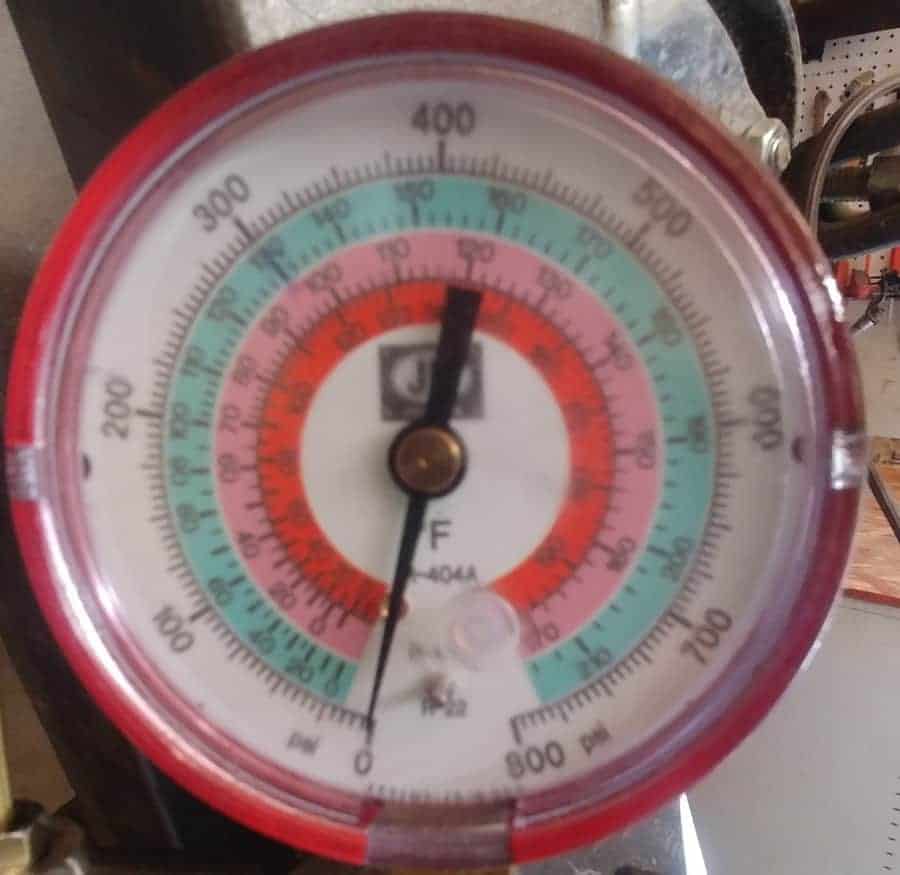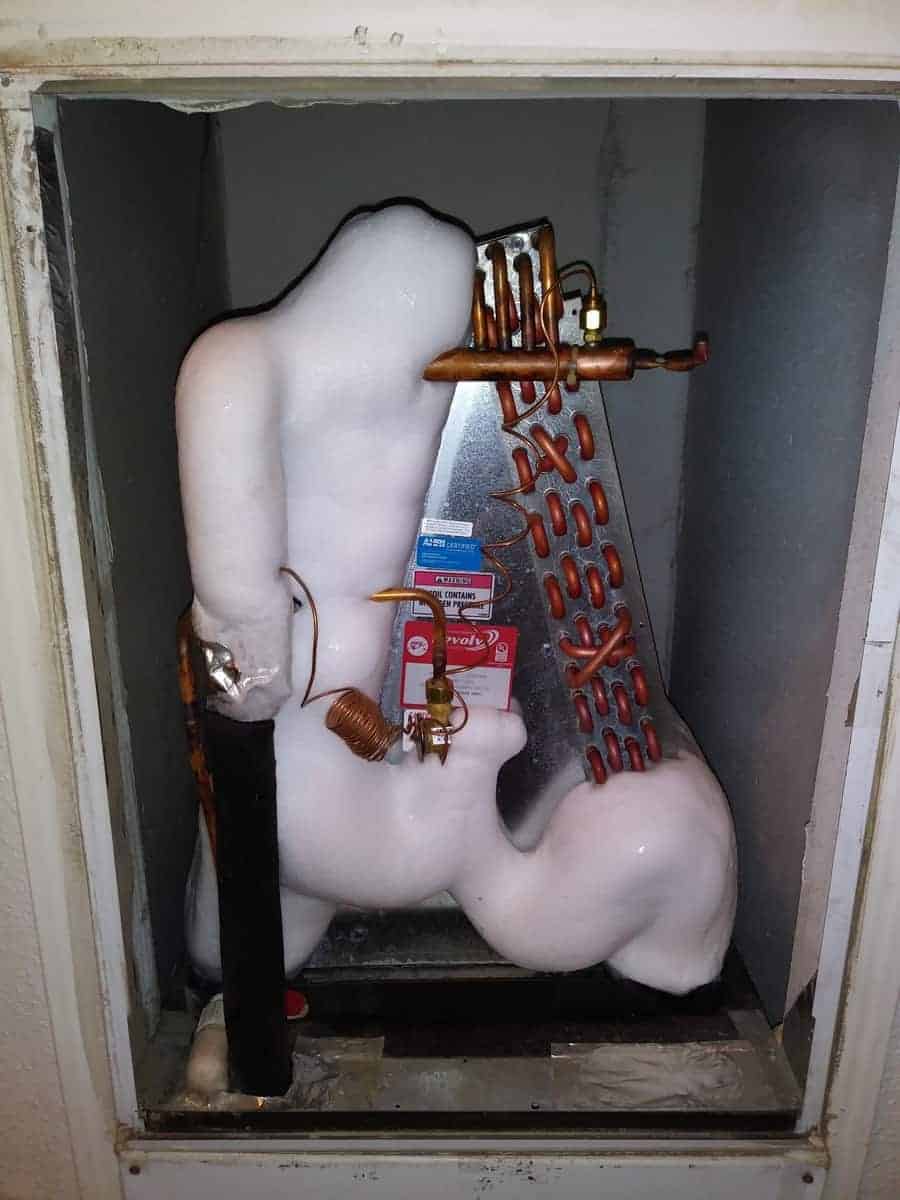Running a conventional air conditioner in the winter can cause the indoor coil to ice over, blocking the air flow through the home. A crankcase heater and an ambient control can be added to slow or intermittently stop the outdoor fan which raises the condensing temperature and keeps the indoor coil from freezing.
Low ambient controls can prevent:
- Stress on compressors
- Frozen indoor coils
- Burned out compressors
- Low pressure short cycling
- Noisy refrigeration pipes
So if you have a need to cool your home in the winter, then it can be done by adding what are called winterization controls.
These controls are mostly used in commercial applications where extra bodies and heat sources make it necessary to cool a room in winter conditions. Computer rooms are an excellent example of when a low ambient control would be necessary.
Commercial freezers and coolers are a very common application. They have to run year around.
In the heat of summer the outdoor fan runs to cool the hot refrigerant in the outdoor coil. Stopping the fan in the summer heat would run the head pressure way up and over heat the compressor.
But stopping the fan in the winter raises the head pressure or condensing temperature and makes the air conditioner think it’s summer time.
Wish it was that easy for some of us when we’re up to our necks in snow and ice.
Place your hand over the top of your air conditioner in the summer when it running and you can feel the heat being transferred out of your home through the medium of refrigerant.
The indoor coil or evaporator picking up the heat and the outdoor coil or condenser is getting rid of that heat.
The compressor in your outdoor air conditioning unit is nothing more than a pump. It’s pumping what you may be more familiar referring to as Freon . Freon being a brand name that just became frequently used, just like Kleenex.
In the industry we call it refrigerant or freaky frost. Ever put your hand in front of a can of hair spray years ago when they actually used refrigerant to propel the hair spray from the can? It was very cold, right. Well if you remember that you actually experienced an air conditioner in action.
Just not contained in a circuit of piping and orifices and a compressor.
The compressor is just like that can of hair spray. A compressor pumps against a valve or an orifice. Could be a tiny hole or long skinny tube. When the refrigerant reaches the other side of that orifice it’s just like that hair spray leaving the can. It gets really cold because of the low pressure it is experiencing.
That’s your indoor coil. The cold one. Your indoor fan blowing air through the cold coil or what is called the evaporator.
With refrigerant, temperature and pressure are relative. If you raise the pressure you raise the temperature.
If you take a gander at a set of refrigerant gauges you may get a better idea of the relativity between temperature and pressure when checking a gas charge in an ac.
This is the high side gauge that measures the temperature and pressure of the outdoor coil or the condenser. If you look at the temperature in the pink area and select 90 degrees and follow it out you will see the pressure which would be about 275 lbs.

And this is the low pressure gauge that measures the temperature and pressure at the indoor coil or evaporator. ollowing the pink again, and look at 32 degrees. That’s the freezing point of the indoor coil. We have to keep the pressure up on the high side gauge in order to keep the low side gauge above freezing.

When we add winterization or low ambient controls to an air conditioner we now have control of the condensing pressure and we are able to keep the evaporator temperature above freezing.
Time To Add A Crankcase Heater
When temperatures drop, refrigerant in mostly a liquid form has this tendency to go under the oil in a compressor. If your compressor were to start while this liquid refrigerant were under the oil, some of that oil would get washed out of the compressor would have a hard time starting because it’s only designed to pump vapor, not liquid.
The fix is to install a crankcase heater. A flexible heat strip that straps around the base of the compressor and keep it warm enough to boil that liquid refrigerant out into the system beyond the compressor.
Can I Add Low Ambient Controls To My Heat Pump?
The same ICM Control that will work for your air conditioner has an optional heat pump bypass. Since heat pumps both heat and cool using the same compressor and fan it’s important for the low ambient control to distinguish the difference between heating and cooling modes and only cycle the outdoor fan while in the cooling mode.
The bypass then closes and allows the fan to run while the heat pump is in the heat mode.
The ICM control keeps a smooth pattern of head pressure which results in a more efficient cooling cycle.
Other fan cycling or low ambient controls are not as precise as the ICM. They allow the fan to go on and off instead of seeking a medium speed thus creating wide swings in pressures.
Their are other more sophisticated controls that apply to more commercial systems with higher demand and operating hours. These don’t really need to come into focus here where we have tried to cover basic residential uses for low ambient devices to help cool in the winter.
I wouldn’t have even considered this article had I not just come across a customer who wanted to cool his house on a 50 degree day. Of course I thought can’t you just open a few windows? No, because allergies were rampant. All I can say is the customer is still the customer and they have a need that needed to be satisfied.

